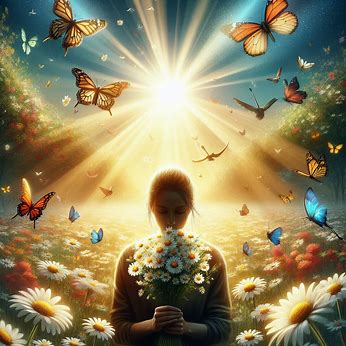Introduction
“Coping With Seasonal Affective Disorder Naturally“
Feeling down during certain seasons? You’re not alone. Seasonal Affective Disorder Naturally (SAD) affects millions of people, causing symptoms of depression that coincide with specific times of the year. But fear not! There are natural ways to combat these mood shifts and regain your zest for life. Let’s explore how you can tackle SAD head-on,affective disorder naturally.
Key Takeaways:
- Seasonal Affective Disorder Naturally (SAD) is a form of depression linked to reduced sunlight exposure in the winter months.
- Natural remedies like light therapy, exercise, vitamin D, spending time outdoors, and healthy eating can effectively manage SAD symptoms.
- Seeking professional help is crucial if SAD persists.
Q: Can SAD be cured?
A: While there’s no definitive cure for SAD, its symptoms can be effectively managed through natural remedies, therapy, and support groups.
Understanding Seasonal Affective Disorder Naturally

SAD is a form of clinical depression that follows a seasonal pattern. Most commonly, it strikes during the darker months, from September to April. Women tend to be more affected than men. But what causes SAD? Researchers believe it’s linked to disrupted circadian rhythms due to reduced sunlight exposure. Let’s delve into some natural remedies to help you beat the winter blues.
1. Get a Light Box
If sunlight is scarce, invest in a light box. These devices emit bright, full-spectrum light that mimics natural sunlight. Just 20-30 minutes a day can significantly improve your mood and energy levels.
2. Keep Exercising
Regular physical activity boosts endorphins and serotonin, both essential for combating depression. Whether it’s a brisk walk, yoga, or dancing, find an exercise routine that suits you.
3. Add a Vitamin D Supplement
Since sunlight is a primary source of vitamin D, consider taking a supplement during the darker months. Vitamin D plays a crucial role in mood regulation.
4. Get Outside
Even on chilly days, spending time outdoors exposes you to natural light. Bundle up and take a walk, breathe in the fresh air, and let the sun work its magic.
5. Talk It Out
Don’t underestimate the power of conversation. Reach out to friends, family, or a therapist. Talking about your feelings can alleviate the weight of SAD.
6. Eat a Healthy Diet
Nourish your body with whole foods rich in vitamins and minerals. Omega-3 fatty acids, found in fish and flaxseed, may also help improve mood.
7. Reach Out for Help
If SAD persists, seek professional guidance. Therapists, counselors, and support groups can provide valuable coping strategies.
Exploring Nature vs. Nurture
- Are Eating Disorders Nature or Nurture? Both genetic and environmental factors play a role. Genetics may predispose some individuals, but societal pressures and emotional triggers also contribute.
- Are Mental Disorders Nature or Nurture? It’s a complex interplay. Genetics provide susceptibility, while life experiences and environment shape mental health.
- Is Affective Disorder the Same as Bipolar? No, they’re distinct. Affective disorders encompass mood disturbances, while bipolar disorder involves extreme mood swings between depression and mania.
- Types of Affective Disorders: These include major depressive disorder, dysthymia, and bipolar disorder.
Natural Approaches to Other Mental Health Concerns

- Treating Narcissistic Personality Disorder: Therapy, such as cognitive-behavioral therapy (CBT), can be effective in managing narcissistic traits.
- Natural Depressants: Chamomile tea, valerian root, and passionflower are calming herbs that may help reduce anxiety and promote relaxation.
- Natural SSRIs (Selective Serotonin Reuptake Inhibitors): St. John’s wort is a popular herbal remedy that may have antidepressant effects.
- Managing SAD Naturally:
- Can SAD Be Cured? While there’s no definitive cure, symptoms can be managed effectively.
- Treatment Without Drugs: Light therapy, exercise, and social support are key.
- Vitamin D and SAD: Adequate vitamin D levels may alleviate symptoms.
- Duration of SAD: Symptoms typically last until spring.
- Recovery from SAD: Yes, with proper self-care and support.
- Improving Mood: Engage in activities you enjoy, connect with loved ones, and prioritize self-care.
- Vitamin D for Prevention: Ensuring sufficient vitamin D intake may help prevent SAD.
- Vitamins for Seasonal Depression: Consider vitamin D, B vitamins, and omega-3s.
Conclusion
Embrace the natural remedies, seek support, and let the light in. Remember, you’re not alone in this seasonal battle. With the right strategies, you can conquer SAD and emerge stronger than ever. 🌞

